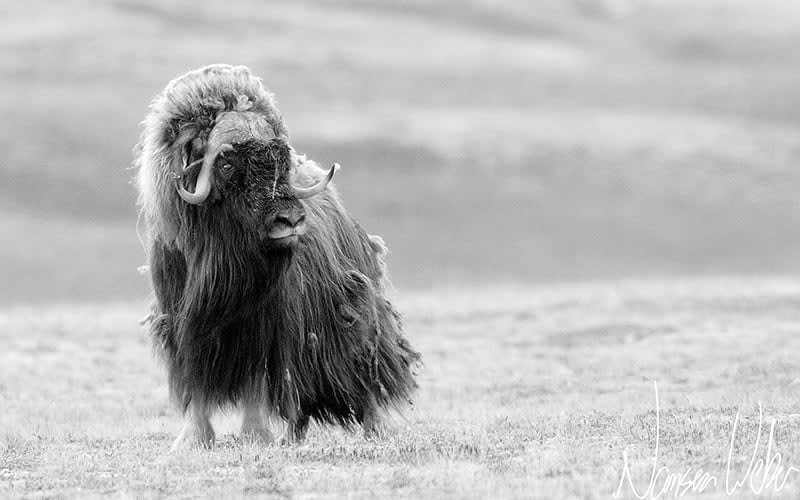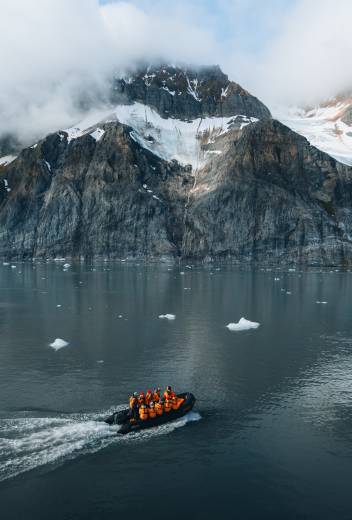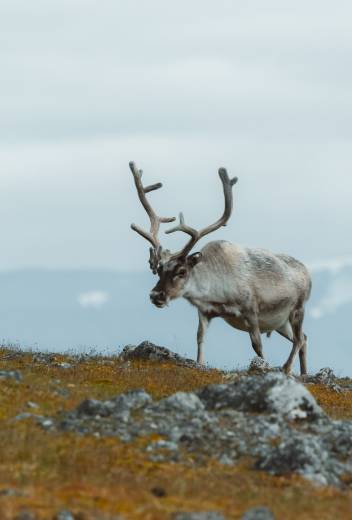Nansen Weber has had access to the Arctic as his photography playground his entire life. Spending most summers in his youth exploring Baffin Island with his family and Inuit friends, he grew up with the spectacle of the Canadian Arctic as his muse.

In 2000, Weber’s family acquired Arctic Watch Wilderness Lodge on Somerset Island at the Cunningham River estuary. Nansen is now the lead wildlife photographer at the 5-star lodge, a world-renowned adventure lodge and beluga whale-watching destination.
His extensive portfolio also includes incredible shots from Peru, Chile, and Botswana and he has worked alongside professionals from Ocean Futures and the BBC. His work has appeared in The Daily Telegraph and in Canadian museums and aquariums. Weber was a finalist for ‘Rising Star Portfolio’ in the Natural History Museum’s Wildlife Photographer of the Year – 50th Anniversary competition.
This year, we were proud to announce Quark Expeditions’ partnership with Arctic Watch, our first land-based expedition. As guests prepare for their immersion in the Canadian Arctic in 2015, we spoke with Nansen to get his expert advice on photography in this unique destination.
We recently shared tips on packing for your arctic adventure – now, prepare to capture stunning photos of arctic expedition seascapes, tundra and wildlife, with these tips from photographer Nansen Weber.
Ideal Arctic Photography Equipment
Nansen shoots with the Canon 1DX and equips himself with a wide-angle lens, the EF 16-35 mm f/2.8L II, which is mainly used for scenery shots.
He also uses telephoto lenses, including the EF 70-200mm f/2.8L IS II and the EF 400mm f/2.8L IS II USM. He notes that he likes to use the Extender EF 1.4X. “It allows me to get closer to my subjects in certain circumstances,” he said. “For the wildlife enthusiast, I recommend at least a 200mm, but preferably a 400mm.”

Which one can you leave at home? “I do not recommend the Extender EF 2X,” Nansen shared. “I find you start to lose the sharpness and quality of the image.”
Nansen recommends that arctic photographers bring an array of neutral density filters, circular polarizers, and gradated neutral density filters to capture the many great waterfalls, streams and landscape shots.
There are a large range of fantastic products out there at reduced cost, he notes.
“In the past I have used both the Canon EOS 5D and Canon EOS 7D; they are both great cameras,” he said. For those looking for a point-and-shoot option, Nansen recommended the PowerShot G1 X or the PowerShot SX50 HS, which he said has a remarkably strong zoom and great video capabilities.”
The Shot of a Lifetime in the Arctic Wilderness

The beluga whales are a huge attraction at Arctic Watch, with pods of hundreds or even thousands gathering in the estuary to parade and play.
“We truly have the best beluga whale watching in the world,” Nansen said. “Nowhere else in the world have I seen beluga whales perform like they do here.”
Nansen recently completed his Advanced Open Water Diving Certification in Honduras. It’s the first step, he said, towards diving for underwater photography in the Arctic.
But fear not, you can stay perfectly dry and capture incredible shots of the wildlife around Arctic Watch.
“We have polar bears, musk ox, and arctic fox – some summers they have pups in the local den,” he said. “Arctic fox are great fun to watch and photograph. Some of my best moments were watching the arctic fox family nearby. We also have snowy owls, and a variety of other arctic birds. If you look closely, you’ll find a large variety of arctic flowers, as well.”
Nansen told us he tries to shoot with a shutter speed of 800. “That way, I am certain I will stop the animal or bird and have a sharp image,” he said.
“Always shoot with your lowest possible ISO – in my case, that’s ISO 200 – if conditions allow. There are no trees to cause shadows and we have twenty-four hours of sunlight. Unless it’s raining, lack of light usually isn’t an issue. These days, cameras have amazing ISO capability, so you can shoot almost all the time without worrying.”
Combating the Challenges of Arctic Photography

The Arctic may be one of the harshest locations in the world to photograph, Nansen cautions.
“I think it’s the unreliable weather that makes it so challenging,” he said. “Weather really controls all factors up here in the Arctic. Harsh winters can mean low lemming populations, and lemmings determine how many foxes, owls, rough-legged hawks, peregrine falcons and jaegers are going to be in the area. They all depend on lemmings; no lemmings, no birds and foxes.”
Patience is key when photographing in the Arctic, he shared. Keep your expectations in check and be prepared for anything.
“In general, the Arctic is made up of many rivers and streams, so when it rains, flooding is often a challenge and can constrain our movements. It’s all part of the challenge though – it makes it that much more rewarding when you do get a fabulous picture!”

His greatest tip for arctic photographers and visitors: “Your story is just as important as the image. Don’t expect an award-winning photo in every image captured.”
Nansen may take thousands of photos, he said, just to get three or four he calls winners. With the capabilities of digital cameras and memory cards, this isn’t an issue.
As you prepare for your arctic vacation, take Nansen’s tips to heart! You would be hard-pressed to find a more passionate or experienced polar photographer to guide you through your week at the top of the world.
You can keep up with Nansen’s photographic escapades on his website and by following his Facebook Page.

All images courtesy of Nansen Weber Photography.
Headed south instead of north? Read all about which types of photography gear you should be bringing to Antarctica:








